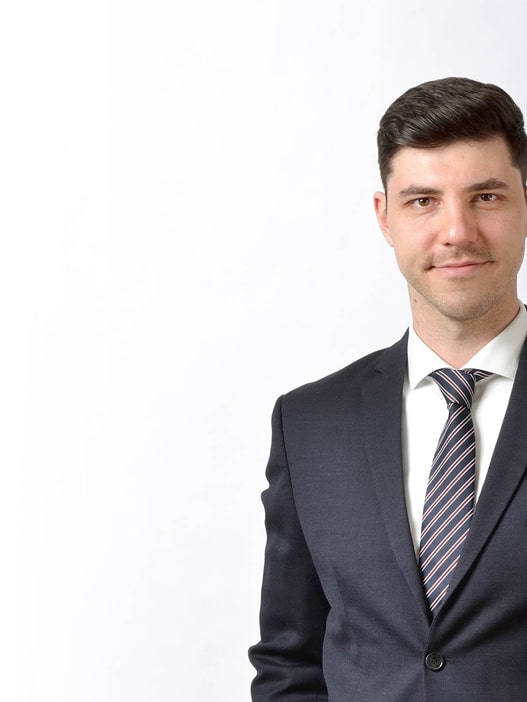Are your trademarks “meta” enough? Protecting trademarks in the metaverse
Trademarks in the metaverse
Despite undeniable uncertainty in defining its parameters, one thing seems certain. The metaverse is here to stay. The concept appears simple: a virtual space that allows its users to experience the internet or practically any digital content in the most immersive way possible. In practice, however, the metaverse raises numerous questions that are similar to those faced at the rise of the world wide web. Amongst these questions, the notion of protecting existing brands and trademarks has received widespread attention in the digital community.
With the growing popularity of the metaverse and its digital open-world concept, there is an increasing number of alleged infringements involving existing trademarks and brands in an attempt to cash-in on their global reputation or use them as a base for creative artwork. Naturally, the registered holders of such trademarks and brands are wary of this creative phenomenon that is rapidly spreading in the digital world and want to retain control over any such uses of their intellectual property.
In such open and decentralized environments, owners of trademarks will have to carefully consider creating their own digital presence through; new or expanded trademark registrations; more effective mechanics for enforcement and policing infringing behavior; remaining mindful of licensing arrangements governing their new digital brand; and not scaring away layman consumers with overly complex usage boundaries.
By way of example, just recently, in February 2022 Nike filed a lawsuit against StockX (an online marketplace and clothing reseller) for making unauthorized use of its sneakers and their designs in the form of NFTs. The NFTs were serving as digital receipts used to authenticate the goods sold. However, Nike claimed the separate NFTs constituted digital goods, and thus made consensual use of their intellectual property. The suit, still ongoing, was filed on the alleged points of trademark infringement and dilution, with a subsequent amendment to the sale of counterfeit goods. Interestingly, in the meantime, Nike has also acquired metaverse player RTFKT at the end of 2021, essentially entering the digital world of the metaverse with its own NFT studio. Another interesting case was seen with respect to the digital reproduction of the Hermés Birkin bag by American artist, Mason Rothschild, which was minted as an NFT and received great media attention. The NFT of the digital art piece was later sold on OpenSea for great profit. Unsurprisingly Hermés sued the artist for trademark infringement for revenue obtained through the unlawful use of the luxury brand’s goodwill and intellectual property. This example tellingly shows, how market players are testing the waters by either trying to establish their presence in this new digital market or looking for ways they can best protect their intellectual property and brand image from brand dilution in the metaverse, whether it be by law or other means.
How can I prepare my business for the new digital age?
When discussing means of ensuring trademark and brand protection strategies in the metaverse, all businesses should consider:
- Reviewing their trademark portfolio and consider extending the classes of their existing trademarks to include classes allowing more efficient protections against infringement, since as an example, under EU regulations the holder of an EUTM has the right to prevent the use of the same or similar trademark only if used for the same or similar goods and services;
- Take steps to create an efficient system of policing and identifying infringing content on the metaverse (similar to those services that are already available for online content); or
- Focus efforts on preparation and prevention in order to have readily available (or at least well-established) grounds to challenge potential infringement in the digital world on the basis of similarity and confusion or abuse of good reputation.
I want my trademarks to cover digital services, does this solve my issues?
As we can see, entering into the uncharted world of the metaverse can have its benefits and challenges for any brand. However paradoxically, actively staying away from this digital world may prove to be equally challenging, as without a presence, businesses will struggle to establish their claims against infringing behavior or fall behind in terms of their reputation and visibility.
Ultimately, regardless of which approach is chosen, the following aspects should be carefully reviewed by potential applicants:
The pros of filing for trademark protection (or extending existing marks) to include classes for digital goods and services:
- Costs for registering a single trademark in the EU or in any of its member state is relatively inexpensive and in the absence of an opposition, will grant protection for 10 years with possibility to extend;
- It signals to all market players (as well as competitors) that the brand owner is aware of the value of its IP assets and has good means of prosecuting infringements;
- Having an established and registered trademark as a logo creates convenient means of marketing.
What to consider before filing:
- The fast-moving world of the metaverse and the digital realm creates many uncertainties around how the classes of the trademark should be specified or how it should be registered given the new types of trademarks available (3d marks, visual and sound marks);
- Life in the metaverse is subject to its terms and by joining, businesses agree to play by its rules. Terms of use for certain providers may limit their liability or establish the jurisdiction of countries with less effective IP protection, making the pursuit of claims a complex endeavor, even with a registered trademark;
- Trademark owners will have to plan their digital presence and extended trademarks strategically. If not, they risk competitors and infringers challenging those marks in instances where newly added classes were not exploited for the respective periods provided by applicable law (generally 5 years).
Closing remarks
While the concept of the metaverse can easily be grasped, or rather experienced various potential issues may already arise in relation to the real-life implications of this so called “duplication” of our actual physical reality. However, even in its early uncertain stages, being present in the metaverse grants a unique opportunity to become visible in this rapidly expanding digital community. It opens the door to countless commercial, business, and marketing opportunities. However, in order to create value similar to that as in the real world, businesses need to make sure that one of their most valuable assets in the digital world, their brand, is protected by the strongest strategy available.
“…even if surrounded by many question marks and risks, being present in the metaverse allows companies to become visible in the most rapidly expanding digital community since the dawn of modern internet…”
How can we help?
While the developments around the metaverse may appear overwhelming, there are many aspects in which Wolf Theiss can aid your business in protecting brands and IP assets. We would be happy to advise on:
- reviewing your existing trademark portfolios to asses if they are “digitally compatible”;
- extending the classes of your existing trademarks – to cover digital goods and services in metaverse;
- creating a brand strategy in the metaverse or in relation to NFT tokens;
- assist with the legal aspects of creating an efficient system of policing and identifying infringing content on the metaverse;
- enforcing your rights against infringements in the digital world;
- reviewing and analysing legal framework and terms of service of a specific metaverse chosen by you;
- preparing and negotiating license agreements relating to your trademarks in the digital world;
- preparing and negotiating other agreements protecting your brand in the metaverse;
- preparing legal aspects and strategy on how to monetize your brand and trademarks in the digital world.
Wolf Theiss has a specialised IP &TMT team, with over 50 lawyers firm-wide ready to assist your business in matters related to the most recent advancements in technology. We understand that developing an IP strategy aligned with business needs is crucial for building a solid foundation for a digital business. The team has solid experience in a wide spectrum of IP matters, including trademarks, patents, copyrights, unfair competition, IP litigation, the protection of know-how and trade secrets, as well as IP commercialisation, and IP transfer and licensing agreements. We support companies around R&D projects, the development and implementation of frontier technologies (IoT, NFTs, AI and ML) and IT services, and advise on data protection and cybersecurity matters.

Download Client Alert in English


